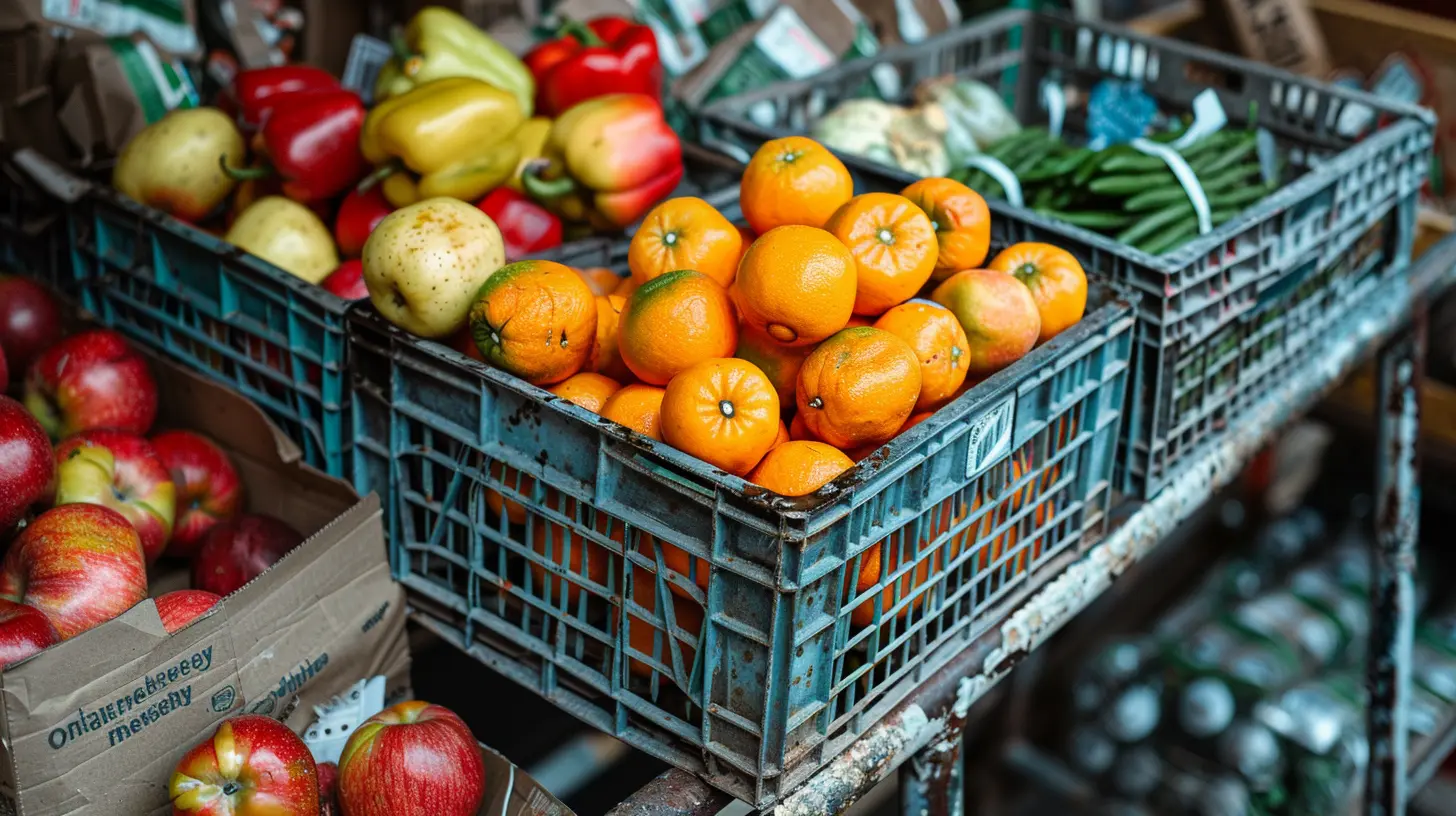How Inflation Disproportionately Affects Low-Income Households
26 October 2025
Let’s get real—when inflation hits, it doesn’t knock on everyone’s door equally. While the wealthy might feel a slight pinch, low-income households get absolutely steamrolled. Every dollar matters, and when that dollar loses its purchasing power? It’s not just an inconvenience… it's a full-blown financial crisis.
In this piece, we’re going deep into the messy relationship between inflation and low-income families. We're talking skyrocketing grocery prices, insane rent hikes, stagnant wages, and broken safety nets. You’ll see how inflation doesn’t just hit harder for the poor—it hits differently. Let’s break it all down, no fluff.
What Is Inflation, Really?
Alright, before we dive into the heavy stuff, let’s clear up what inflation is. At its core, inflation is the general rise in prices over time. That means your money buys you less than it did yesterday. It’s like filling your gas tank and realizing half the money vanishes before the pump even clicks.A little inflation? Normal. But high or prolonged inflation? That eats away at everything—savings, purchasing power, and your financial sanity.
Why Inflation Hurts, But Hurts Unequally
Sure, inflation hits everyone on paper. But let’s be honest—it doesn’t hit the same way for a CEO as it does for a cashier.Let me paint you a picture:
- A wealthy household might grumble about a $50 price hike on a luxury item.
- A low-income family might have to decide between milk or medicine.
See the difference?
Let’s dig into the unique ways inflation disproportionately affects low-income households.
1. Essentials Become Unaffordable, Fast
Here’s the brutal truth: Low-income families spend the majority of their income on necessities like food, rent, electricity, and transportation. These aren’t 'wants'—they’re 'can’t-live-without' items.Now, inflation tends to spike prices in these very areas. When food goes up 10%, that's not a line item to cut from your monthly budget—you still gotta eat. If gas prices double, you still need to commute to work. And when the rent jumps? What can you do… sleep in your car?
Wealthier households? They can cut out discretionary expenses. That second vacation, the new iPhone, fancy dining—those are negotiable. Essentials, though? For low-income households, there’s nothing left to cut.
2. Wage Growth Doesn’t Keep Up
Here’s the kicker: Low-paying jobs rarely come with inflation-adjusted wages. So while prices climb, paychecks stay stuck. It’s like trying to run a marathon on a treadmill—you’re working hard but going nowhere.Let’s say inflation is 7% this year. If you’re lucky, your boss gives you a 2% raise. Guess what? You're still 5% poorer. Brutal math, but that's the reality.
The rich? Their incomes are often tied to capital—stocks, investments, rental properties—which can actually benefit from inflation. Meanwhile, workers relying on fixed hourly wages just get crushed.
3. Savings Get Eaten Alive
Got a bit of savings tucked away? That’s great… until inflation lights it on fire.Here’s how: If you’ve saved $1,000, and inflation is 8%, your money is effectively worth only $920 in purchasing power a year later. Without decent interest or investment returns (which low-income families often don’t have access to), your savings shrink like a wool sweater in a hot wash.
Middle and upper-class folks usually park their money in assets that grow with or outpace inflation—stocks, bonds, real estate. Not everyone has that luxury.
4. Debt Becomes a Double-Edged Sword
Now, this one’s a bit tricky. Technically, inflation can help borrowers by reducing the real value of debt. But here’s the snag—most low-income households carry high-interest, short-term debt. Think payday loans, credit cards, personal loans with nasty interest rates.So while the “value” of debt theoretically goes down during inflation, the monthly payments don’t. And guess what? If you’re using debt to cover rising costs, you’re just digging a deeper hole.
Meanwhile, wealthier folks with fixed-rate mortgages and low interest debt actually come out ahead. Once again, it’s all about the type of debt you hold—and poor households usually get the raw end of that deal.
5. Government Support Falls Short
You’d think government programs would protect the most vulnerable when inflation spikes, right?Well… not quite.
Many financial assistance programs (like SNAP, TANF, or housing subsidies) are based on outdated income thresholds and don’t automatically scale with inflation. By the time politicians update them, families are already in the red.
Not to mention, bureaucratic delays and red tape make it hard for those who really need help to get it fast enough. It's like slapping a band-aid on a bullet wound.
6. Rising Costs Trigger a Vicious Cycle
Inflation isn’t just about spending more—it’s about compounding stress. When the basics cost more, people cut back on health care, delay car repairs, skip meals, and work longer hours just to stay afloat.But that stress? It’s got a long tail. Health issues, burnout, missed opportunities for education or better jobs—they pile up. Inflation doesn’t just strain bank accounts; it stretches lives to the breaking point.
And here’s the real gut-punch: that cycle of poverty isn’t just financial—it’s generational. Kids growing up in inflation-strapped households start off behind and stay behind.
7. No Access to Inflation-Proof Assets
Let’s talk investing. Stocks, real estate, gold, heck—even crypto (for the risk-tolerant) are often viewed as inflation hedges. But how do you invest in inflation-resistant assets when there's nothing left after bills?Low-income households typically don’t have investment accounts. They might not even have regular access to a bank. That means they get zero upside from rising asset prices—while still absorbing all the price hikes at the grocery store.
Inflation? It widens the wealth gap faster than a bulldozer on nitro.
8. Geographic Inequality Amplifies the Pain
Not all inflation is national. Some communities—especially urban, low-income areas—experience much higher cost spikes than the official average. Think rising rents in cities like New York or LA. Or food deserts where limited supply pushes prices higher.So while the national inflation rate might look like 6%, a family in a poor neighborhood might be facing 10–12% increases just for the basics.
That’s not inflation—it’s a financial hurricane.
9. Financial Literacy Gaps Leave Families More Vulnerable
Let’s be honest: our school systems often drop the ball on teaching financial basics. If you’ve never been shown how inflation works, how to hedge against it, or how to budget strategically, you’re going to be left in survival mode.We’re not talking about laziness or bad decisions. We’re talking about people who never got the memo—because nobody ever handed them one.
Wealthy households? They pay for financial advisors. Low-income households? They're stuck navigating this mess blindfolded.
10. The Psychological Toll Is Real
Last but absolutely not least… let’s talk about the emotional toll.Living in constant fear of rising prices, juggling bills, choosing between gas and groceries—it wears you down. Inflation causes low-income families to feel hopeless, anxious, and burned out. That stress bleeds into everything: relationships, work performance, mental health.
Inflation isn’t just numbers on a chart—it’s that gnawing in your gut when you swipe your debit card not knowing if it’ll go through.
So, What Can Be Done?
We’ve aired the laundry—now what?It’s not all doom and gloom. There are solutions. They’re just not always easy or fast.
- Policy reform: We need better, faster updates to benefits programs that adjust with inflation.
- Financial education: Let’s start teaching real-life money skills in schools, especially in low-income areas.
- Accessible banking and investing: More inclusive financial platforms could help low-income families protect their money.
- Raising wages: Indexing minimum wage to inflation is a no-brainer.
- Rent control and utility subsidies: You can’t stabilize a household when core expenses are running wild.
And hey, if you're in a position to help—donate, advocate, and elevate voices calling for change. Let’s stop pretending inflation is a “macro” problem. It’s a human one.
Final Thoughts
Inflation isn't some neutral economic phenomenon. It’s a wrecking ball that tears through low-income households with merciless force. When the price of everything goes up, and your income doesn't, life stops being manageable and starts becoming a financial minefield.So let’s stop treating inflation as just a percentage point on a report. For millions of families, it’s the difference between stability and survival.
They don’t just feel inflation—they live it. Every. Single. Day.
all images in this post were generated using AI tools
Category:
Income InequalityAuthor:

Zavier Larsen
Discussion
rate this article
1 comments
Caelum Bowers
Great article! It's crucial to highlight the impact of inflation on low-income households. Understanding these disparities can help shape policies that provide necessary support and financial education. Thank you for raising awareness!
October 29, 2025 at 3:44 AM

Zavier Larsen
Thank you for your insightful comment! I completely agree that understanding these disparities is essential for effective policy-making.


